When you’ve taken a cruise, you may have noticed a small boat appear alongside the ship as it enters or leaves a port.
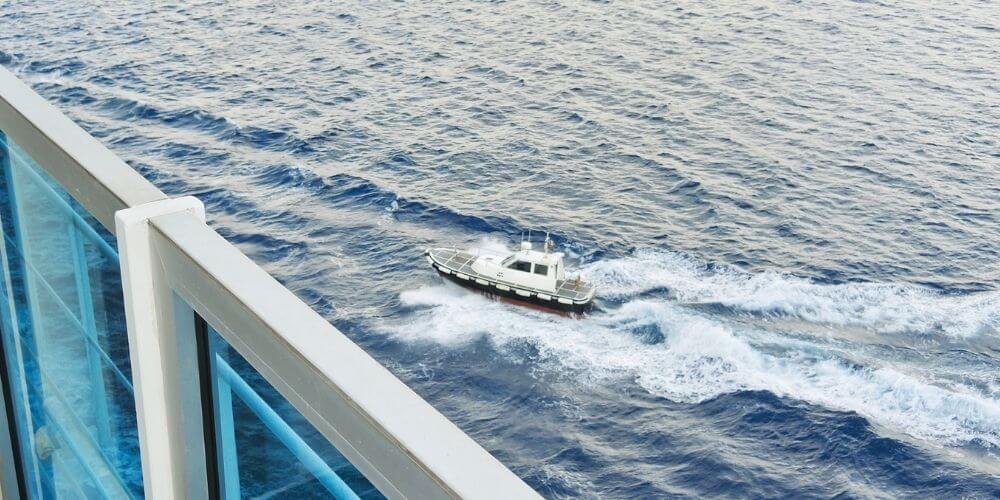
This isn’t a tug boat, it’s a pilot boat, carrying a very important person who boards the ship to help guide it in and out of port.
But what exactly does a ship’s pilot do? And why are they needed? I interviewed a port pilot to find out…
The Role of Ship Pilots
A ship’s pilot (also known as a port pilot) is a seafarer with detailed knowledge of a port and expertise in ship manoeuvring. They board a ship and help the crew guide the vessel safely in and out of ports or other dangerous navigational areas.
Although the captain (also known as the master) always has command of a ship, the pilot is responsible for directing the course and speed of the vessel while it’s within the port area.
Interview With A Ship Pilot
To learn exactly what ship pilots do, as well as what qualifications are needed to become a ship’s pilot, I spoke to an experienced pilot by the name of John.
He very kindly gave up time from his busy schedule to answer all of the questions that we often wonder about port pilots.
Hi, John. What’s your job title and where do you work?
I’m a port pilot and I work for the Port of London Authority, so that is the River Thames. It’s the biggest port in the UK.
We have every type of vessel on the river, including the world’s largest container vessels and some cruise ships. These berth at Tilbury, Greenwich and alongside HMS Belfast in Central London.
How long have you been a port pilot?
I’ve been a pilot since 1991. I started at sea when I was 16, in 1975. So I’m getting close to retirement now.
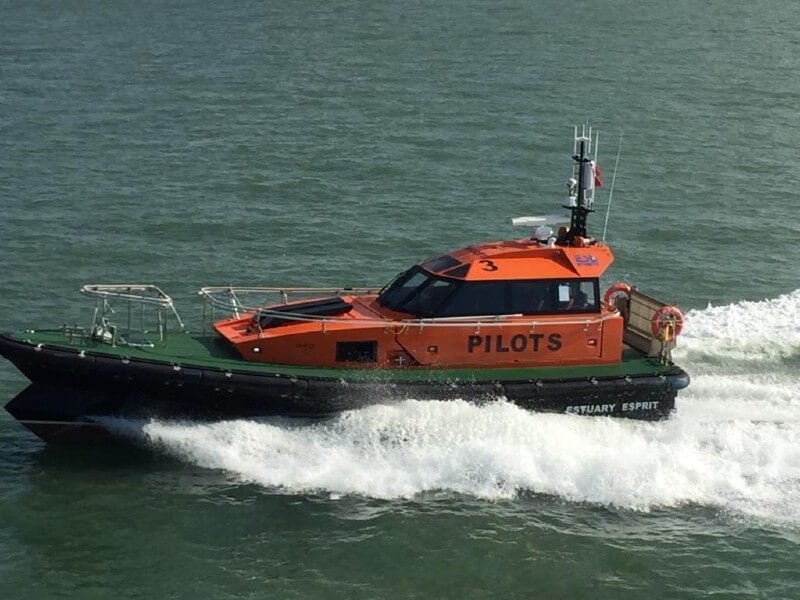
Do you just work at the Port of London or other ports too?
Pilots are specific to their district. We all start off with the same ship’s officer training and have the same qualifications (Masters Foreign Going Certificate of Competency) as a cruise ship master (captain). But then we train in a particular district, so we’re limited to working only in that district.
We can swap districts, but then you would have to go through the whole process of acquiring licences again.
I started off in the port of Shoreham, which is a very small port, when I was 30 years old. I spent two years there. Then I came up to the River Thames, and had to go through another six months of training and progress over a number of years to unlimited vessel size authorisation.
If I were to go to, for example, Southhampton, I would have to do a tailored training programme. It would take at least three months or more to learn the district, complete a series of port-specific examinations, and then I would still have to progress through the class sizes. So I wouldn’t jump on the biggest ships straight away.
Do you just pilot cruise ships or container ships as well?
We do both. On the River Thames, we pilot some of the biggest container ships in the world: tankers, roll-on roll-off bulk, basically all ship types, all the way down to small coasting ships, as well as small and medium-sized cruise ships.
How do the two compare?
Well, the early morning pastries are definitely better on a cruise ship! They all have their challenges and they are equally complex. The weather and tide influence things much more than the type of ship.
Let’s compare the container ship I’m piloting tomorrow, a Hapag Lloyd container ship, versus Anthem of the Seas…
They’re a similar length – the container ship is 333 metres and Anthem of the Seas is 347 metres. The gross tonnage (volume) and beam (width) are almost the same too.
The biggest difference is the draft (depth). Anthem of the Seas has a maximum draft of approximately 8 metres, whereas this container ship can load to about 13 metres. This equates to a considerably increased displacement. However, we have had vessels of up to 16 metres draft on the river.
Both ships have similar windage. They’re like big sails so they can be affected a lot by the wind – 25 knots of wind equates to about 125 tons.
With the container ship, we’ll use tug boats to help control the ship against the wind and current, and to assist the manoeuvre. Whereas the Anthem of the Seas has powerful transverse bow thrusters.
Because the propellors on a cruise ship are now commonly Azidpod type (not always, they could be a conventional twin-screw arrangement), they will rotate directionally 360 degrees. So you’ve got much more control over a cruise ship than a container ship. That’s why container ships need tug boats and cruise ships don’t. Unless the port has a compulsory tug usage code, of course.
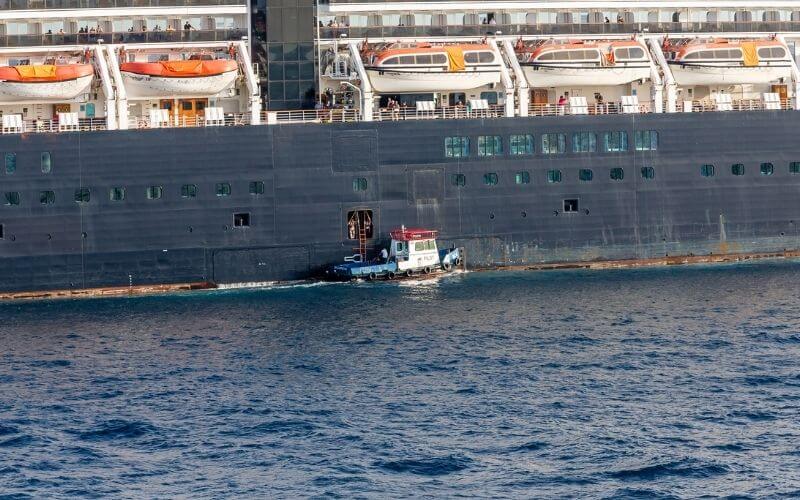
How does the ship’s pilot actually get onto the ship?
I take a small boat called a pilot launch. They’re powerful boats that can get up to speeds of 20 to 26 knots quite easily. They need to have a powerful acceleration so that they can get out of trouble very quickly.
Suggested read: How Fast Is A Knot in MPH?
There are two crew on the pilot boat: a cockswain and a deckhand. The cockswain decides whether you go to sea, because if it’s really rough, you don’t.
As we approach the ship, we check the ladder to make sure it’s correctly rigged. The pilot boat comes alongside, and the pilot and the deckhand walk out round the outside of the boat. We’re not tethered on, we walk along the deck holding the guide rails.
Once the boat is alongside the ship, I will time it with regards to ship and boat movement, and step onto the ladder. The ladder has rope sides and wooden steps, except for the bottom four which are rubber because that’s more durable.
It’s not like the rope ladder you use to go up a tree, it’s much stronger – each step can hold 800kg. Complex international rules govern the construction and rigging of pilot ladders.
This video shows another pilot transferring on the Oosterdam cruise ship in the Queen Charlotte Sound in New Zealand:
Do pilots ever fall into the water?
Yes, sometimes. One of my colleagues fell in the water a few years ago.
It was a small ship. He didn’t manage to transfer from the ladder into the ship because there was a problem with it. He fell about five or six metres, bounced off the pilot boat and dropped into the water. It was dark and the water was very cold. It’s not like the Caribbean. He was successfully recovered.
Pilot launch crews regularly practise ‘man overboard’ rescues. This wasn’t an isolated incident. Worldwide, pilots do and have fallen into the water, and some have paid the ultimate price.
Being a ship pilot is a dangerous job. A ship is doing about seven knots when the pilot boards. So in ten seconds, you’re 30 metres away from where you fell in the water, relative to the ship’s position.
The most dangerous bit is the transfer from the ship to the pilot boat, as you’re going backwards down the ladder. But boarding can, at times, be equally dangerous.
With a cruise ship, you don’t normally have to climb very far, maybe two or three metres. Within the regulations that govern pilot ladders worldwide, we can climb a maximum of nine metres. Over that, other arrangements apply.
In 2023, a pilot in the port of Nagasaki tragically lost his life after falling into the water while attempting to board Diamond Princess. The pilot was experienced, he was wearing a lifejacket and the seas were calm – so it’s unclear what caused him to fall.
Unfortunately, while he was successfully pulled from the sea, he passed away two hours later. This illustrates John’s point about this being the most dangerous part of the job.
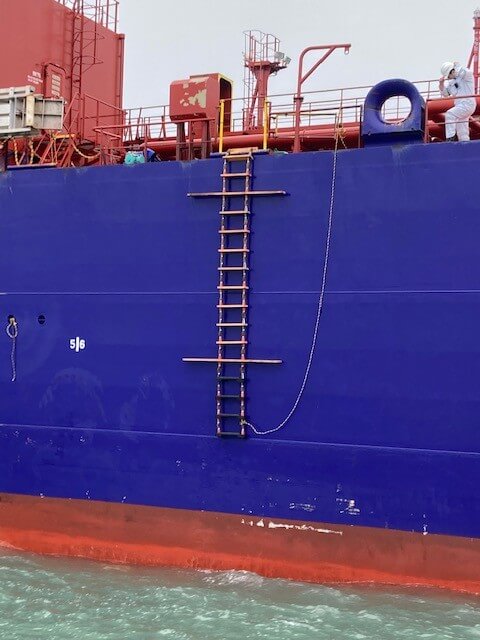
What happens once the pilot boards a ship?
One of the officers will conduct the pilot through the vessel to the bridge – that’s the rules. On a cruise ship, it’s generally one of the security people who have been trained to observe the pilot embarkation procedure in operation. When we’re taken up through the ship, it’s sometimes through the passenger area, sometimes not.
After all of the hellos and pleasantries, we conduct a master-pilot exchange, where I present my plan to the captain for the whole passage.
We discuss the timings, the route, and the amount of water we have at the state of tide. There’s particular reference to under-keel clearance, traffic, weather, tugs if required and a myriad of finer details – all of the pertinent information to the conduct of that passage. This is called a ‘Master Pilot exchange’.
He will reciprocate. The ship will have its own passage plan, which the bridge team are obliged to create. The navigating officer would have prepared the passage plan for the conduct of the vessel into the port.
We will compare plans and amend them so that we’re singing from the same hymn sheet, so to speak. As a general rule, the pilot’s plan is the plan. But the captain is still in command.
The plan can and will be amended continuously, because it’s a dynamic business. There’s traffic (be it ships, yachts, fishing boats etc.), ships manoeuvering in front of you and changing weather conditions.
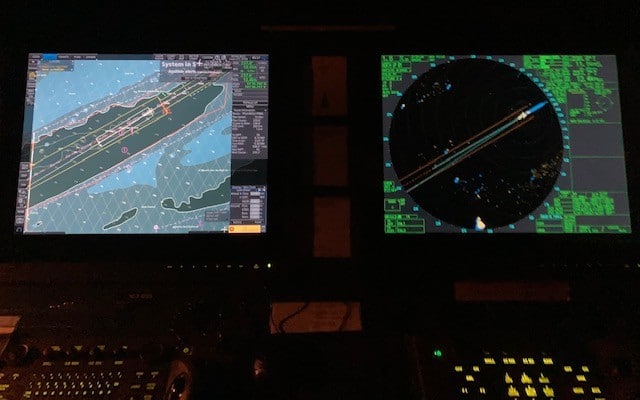
Who’s ultimately in charge of a cruise ship when it’s entering or leaving a port – the pilot or the captain?
The pilot has conduct of the vessel, as in the control of the course, the speed, etc. but the captain always remains in command. This is mandatory in the UK, but in other countries, it may be only advisory.
The captain could relieve the pilot of his duties, if he thinks the pilot’s not competent. But that doesn’t really happen, of course. But he could, in terms of the law.
When it comes to the manoeuvre of the ship, the pilot controls everything verbally. We dictate the speed, initiate operation of the thrusters, put power on at a tug, etc.
Strictly speaking, if I say “Dead slow ahead,” the captain then says to his officer “Dead slow ahead.” But in reality, the command is carried out directly.
With cruise ships, the masters are skilled at handling their own vessel’s complex propulsion and manoeuvring systems. So the whole arrival or departure manoeuvre is an excellent example of two professionals working towards one result.
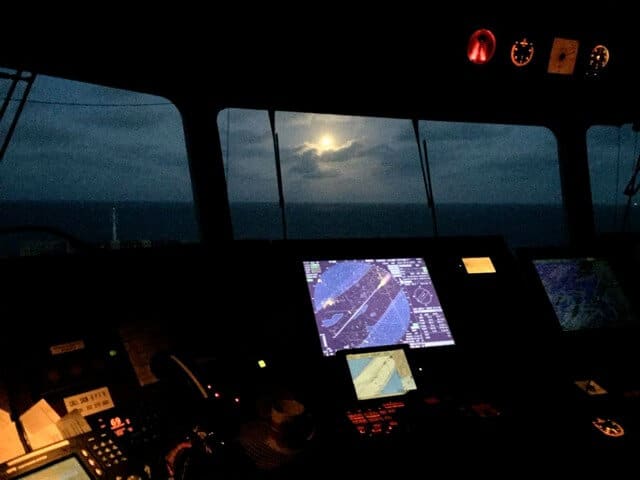
Is this always done in English, no matter what country you’re in?
Yes. English is the language of the sea. So even if everybody on the bridge is mixed nationality, the whole pilotage is conducted in English.
What are your hours like?
We have a roster of nine days on and six days off. We can work at any time within a 24-hour period.
In nine days you rotate around the system, depending on how busy it is. There are fatigue management protocols to adhere to. In a nine-day period, I do about seven or eight ships.
That’s just for the Port of London, though. Each port has its own roster arrangements. In the Caribbean, it could be very different. One pilot may do four or five arrivals or departures in a day, each an hour apart, because each ship is quicker and simpler to pilot in and out.
What does it take to become a port pilot?
The training to be a ship pilot can be very long, especially in the large and complex ports.
To get to what we call ‘class one unlimited level’, which allows you to do most of the biggest vessels, takes around six years. And then to pilot the ultra-large ships takes another good few years after that.
To be a pilot, you’ve got to have some luck. You have to be in the right place at the right time, with the right qualifications.
Every port has its own way of selecting pilots. Here in London, we conduct interviews and test ability using a simulator.
Miami, for example, operates an examination system to select their pilots. Every year they conduct a set of examinations. If they need just three people that year for training, they will take the top three from those examinations and, following a successful interview, offer them a training position. I believe this is unpaid, but I’m sure someone will correct me if I’m wrong.
There are approximately 600 marine pilots spread over all of the UK ports. Some ports are large, some are small. We have approximately 115 pilots in London, as it’s the UK’s largest port.
Over in Rotterdam, I believe there are in excess of 200 pilots. Smaller ports like the island of St Maarten in the Caribbean may have only two pilots.
It depends on how big and how busy the ports are, and how long it takes to guide each ship in.
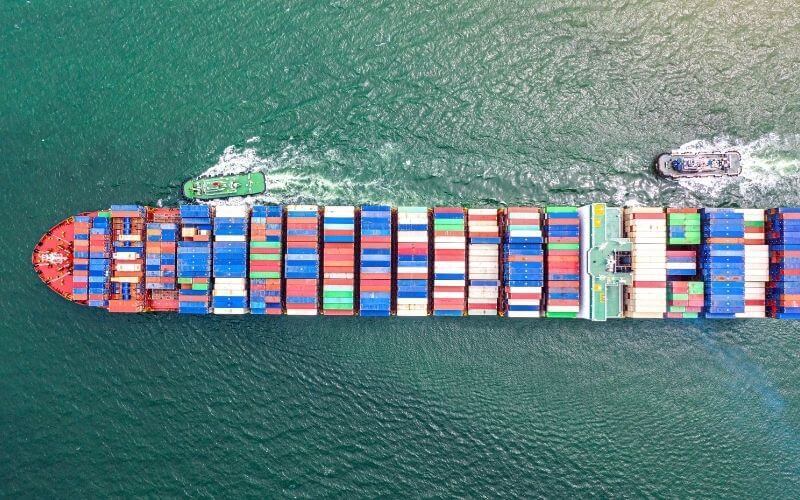
What attracts people to want to be port pilots?
If you’re the captain of a ship, sailing around the world with all that entails, but then you had the opportunity to work in a port, come home every day, have a sort of shore-based life, what would you do?
That said, being a pilot is not everybody’s cup of tea. Many seafarers love their ability to sail worldwide.
In my opinion, though, the best bit of the whole job of being on a ship is the end and the beginning of a voyage. And pilots get that every day.
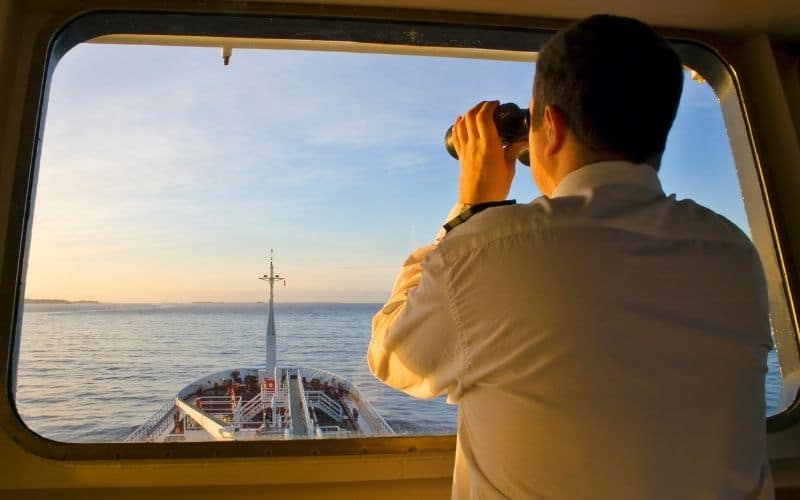
What’s your favourite thing about your job?
Everything! I love going to work. You’ll find very few pilots that will not tell you the same. It’s a profession and a way of life as opposed to a job.
Every day is different. If you took a ship today at 12 o’clock and then it came back a week later at 12 o’clock, the whole job would be totally different. The draft (depth of the ship in the water) changes, the weather changes, the timing’s change, the tides change, etc.
Seafarers are probably some of the best people in the world. They are just wonderful people to meet. Definitely the unsung worldwide heroes during the recent virus breakout!
Is there anything you dislike?
Well, none of us like two o’clock in the morning because, who would? This job is 24 hours a day and it never stops.
Do you like to take cruise holidays yourself?
Yes, I do, and a lot of my colleagues do as well. It’s nice to see somebody else doing the driving for a change! You can sit in the bar and watch it all happen. I’ve been on between six and ten cruises, but I don’t keep count.
When we went to the Baltic on Cruise & Maritime’s Magellan, I was the pilot for the ship going out and also coming back in. So there were no small boats involved that time, as I just happened to be already on board.
It saves the cruise line the cost for the pilot boat if I’m already on board. It also saves on fuel, because the ship doesn’t need to slow down to meet the pilot boat and subsequently speed up.
After the ship’s got to the edge of the district, as I walked out of the bridge door, my status changed and I became an ordinary passenger again.
What’s the best cruise you’ve been on?
I loved cruising to Alaska. We went to the beginning of the 2019 season, so it was the first ship and there was still ice around. It was cold, but it was wonderful.
We’ve enjoyed Caribbean cruises as well. We tend to try and go on cruises to places that we didn’t go in my seagoing career. I never went to Alaska. I sailed through the Caribbean, but I never went to the Caribbean islands, only to the mainland Caribbean ports.
My next cruise is on in Anthem of the Seas to the Canaries in September, and I’m looking forward to that.
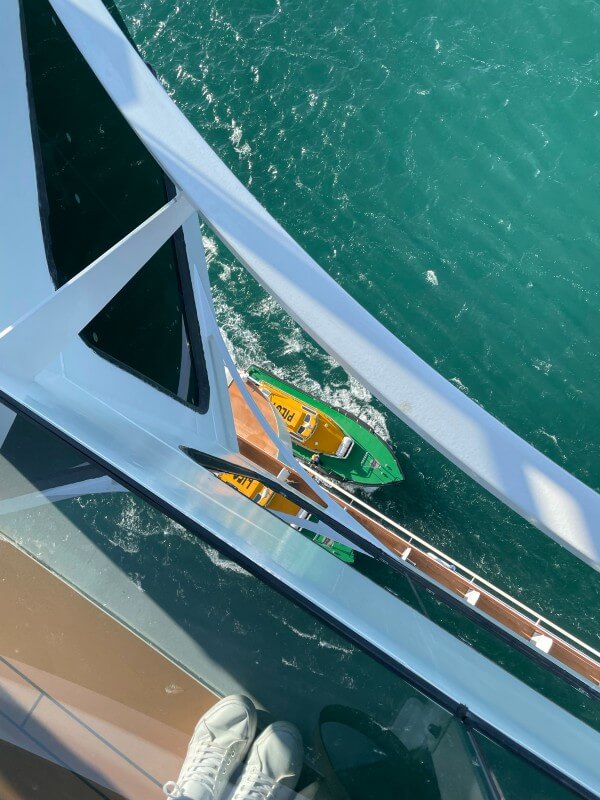
Thanks to John for agreeing to this interview, and for providing many of the photos in this article.
Related Posts:
- How Much Do Cruise Ship Workers Make?
- How To Get a Job on a Cruise Ship (even with no experience)
- Cruise Industry Statistics and Facts
- Secret Codes On Cruise Ships Explained
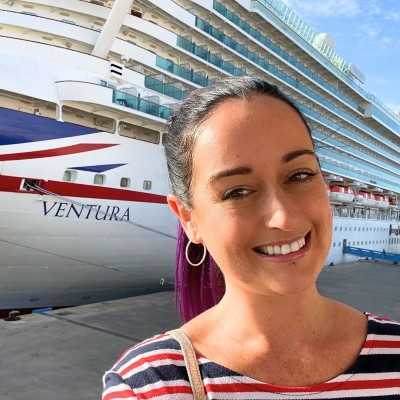
Jenni Fielding is the founder of Cruise Mummy. She has worked in the cruise industry since 2015 and has taken over 30 cruises. Now, she helps over 1 million people per month to plan their perfect cruise holidays.

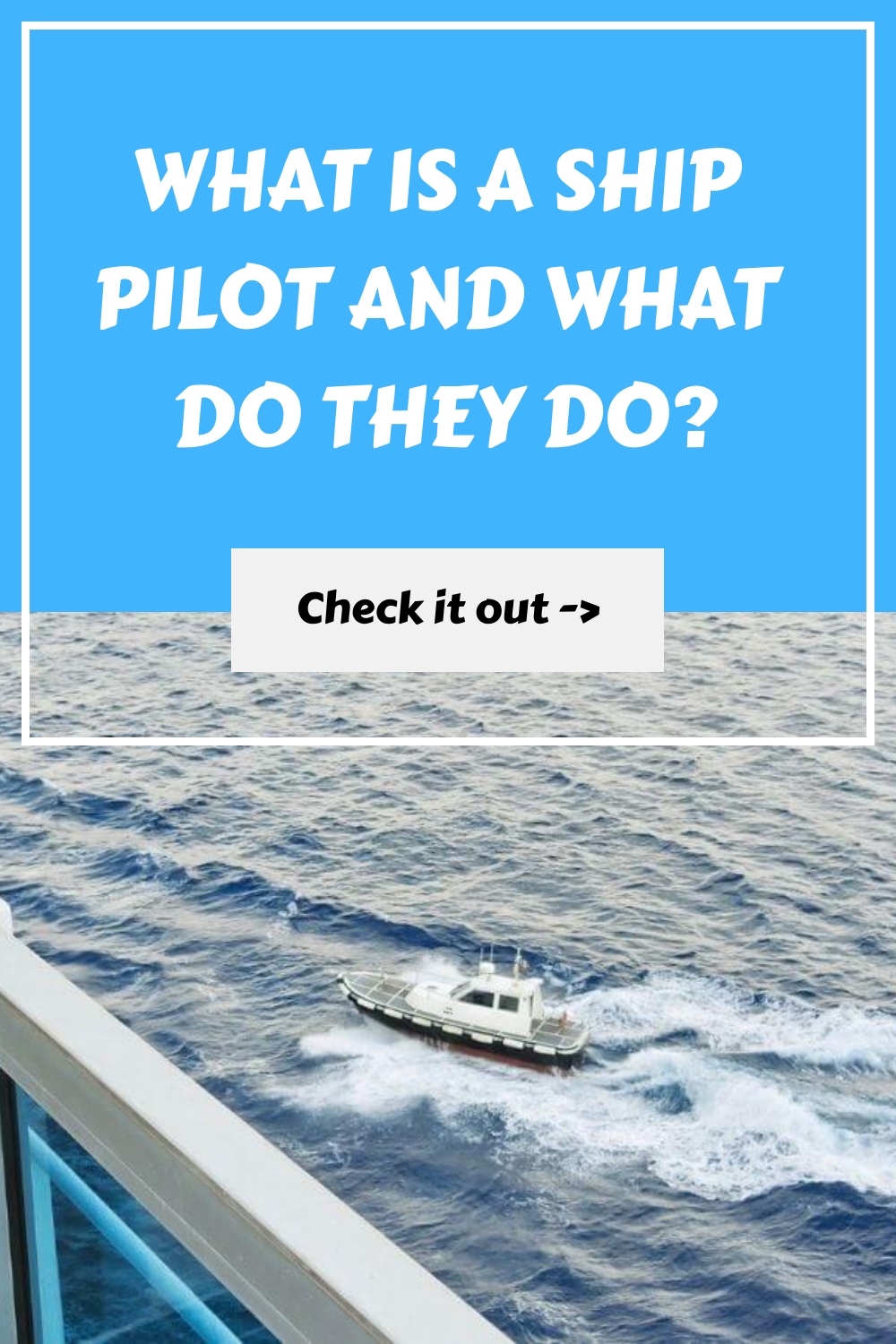

Just been on my first cruise,loved it and am eager to know all the facts about cruise ships,so loved this information about the ships pilots.I didn’t realise they actually boarded the cruise ships.
I live overlooking Dover Harbour (UK) to and see Cruise ships and pilot boats all the time. It’s great to know something about how it all comes together and makes it all more interesting. For example, I had no idea that the ship doesn’t stop to let the pilot on board. That is scary! I shall watch it all with respect and admiration from now on!
I knew in outline what a ship’s pilot does but didn’t know exactly what was involved. I found the whole interview fascinating and informative.